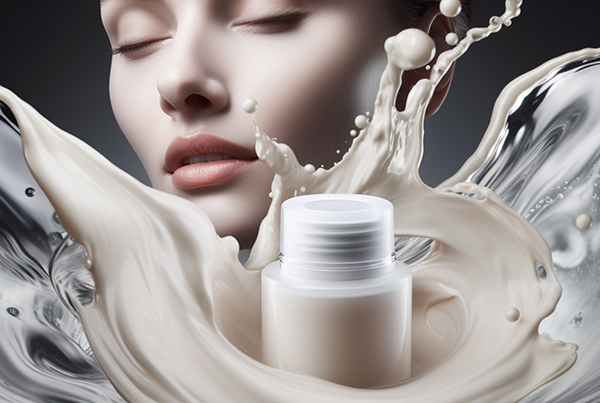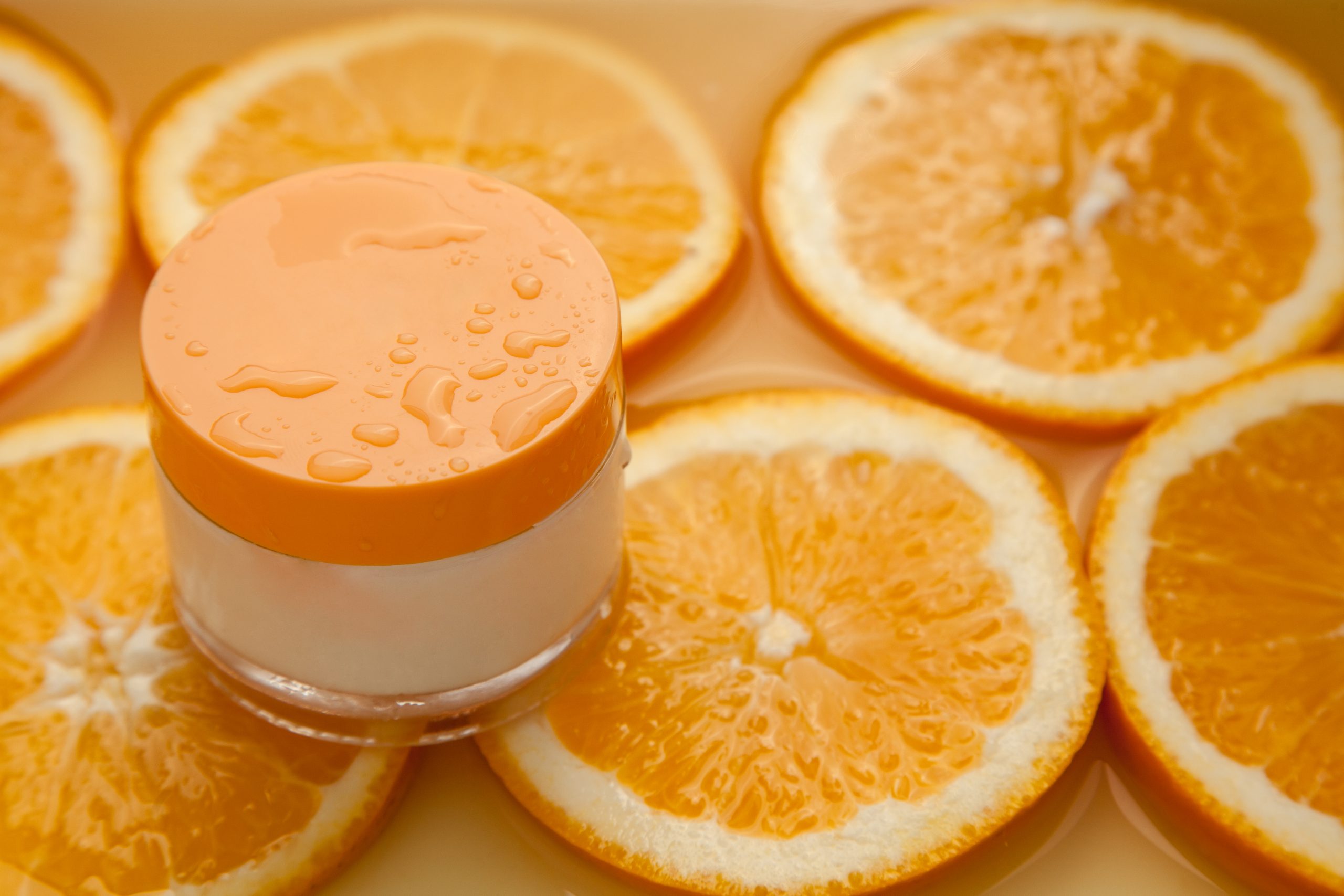However, traditional forms of vitamin C, such as L-ascorbic acid, can be unstable and easily oxidized, making it less effective over time. This is where 3-O-ethyl-L-ascorbic acid, or Ethyl Ascorbic Acid, comes in. It is a more stable form of vitamin C that can penetrate the skin and provide all the benefits of traditional vitamin C without the risk of oxidation. Additionally, it is a gentler molecule, making it suitable for those with sensitive skin.
Ethyl ascorbic acid has been widely used in the skincare industry for a few years now and has become a household name. It is often found in serums, creams, and masks, and is known for its ability to brighten and even out skin tone, reduce the appearance of fine lines and wrinkles, and protect the skin from environmental stressors. Overall, ethyl ascorbic acid is a smart vitamin C derivative that should be considered when developing a skincare routine.
The benefits seem to exceed expectations. However, vitamin C’s most known derivative, L-ascorbic acid, is highly unstable, making it a complicated ingredient from the formulation point of view.
Furthermore, vitamin C needs the right vehicle to be absorbed deep into the skin layers. Otherwise, its benefits might be squandered. Hence, finding the right formulation (serums Vs. Vitamin C eye cream, for example) and the right derivative can be an impossible task for some.
Even though there are many options available, L-ascorbic acid is the obvious candidate. However, 3-O-ethyl-L-ascorbic acid is the ingredient to look for in your skincare formulations if you want less irritation without compromising performance.
The Importance of External Supplementation of Vitamin C
Most plants and animals have the ability to synthesize vitamin C from glucose, an essential nutrient that plays a crucial role in various biological processes. However, humans are one of the few species that are unable to synthesize ascorbic acid due to the absence of the enzyme L-glucono-gamma lactone oxidase. This means that we need to obtain vitamin C from external sources such as fruits, vegetables, and supplements. Despite the availability of oral supplements, only a small fraction of biologically active vitamin C is absorbed by the body. This has led to an increasing trend in the use of topical vitamin C formulations such as creams and serums to take full advantage of its skin benefits. Vitamin C is known for its antioxidant properties, which help to protect the skin against free radical damage, reduce inflammation, and promote collagen synthesis. Topical vitamin C formulations have been shown to improve skin texture, reduce the appearance of fine lines and wrinkles, and brighten the complexion. In conclusion, while humans may not be able to synthesize vitamin C, we can still benefit from its skin-enhancing properties through topical application.
What is L-Ascorbic Acid?
Vitamin C is an essential nutrient that plays a vital role in maintaining good health. It is known for its antioxidant properties that help protect cells from damage caused by free radicals. Vitamin C is also crucial for collagen synthesis, wound healing, and immune function. However, not all vitamin C derivatives are created equal. L-ascorbic acid is the most potent and well-studied form of vitamin C, but it is also highly unstable and prone to oxidation.
This means that it can lose its efficacy and turn yellow or brown when exposed to air, light, or heat. To overcome this challenge, cosmetic formulations with higher viscosity and multiple emulsified systems are used to protect against premature oxidation. Humectants present in vitamin C eye creams can also enhance photostability. In recent years, researchers have been exploring micro and nano encapsulated delivery systems as a way to improve stability.
Additionally, efforts are being made to develop more stable molecules that retain excellent performance. Overall, vitamin C is a valuable nutrient that offers numerous benefits, and researchers are working hard to find ways to maximize its potential.
3-O-Ethyl-Ascorbic Acid: A More Stable Vitamin C Derivative
Ethyl ascorbic acid also known as ethyl ascorbic acid, is a derivative of vitamin C that was developed in the process of finding more stable molecules. This molecule has paved the way for gentler yet effective vitamin C derivatives. The addition of an ethyl group in the third carbon position makes the molecule highly stable and soluble in both oil and water.
Ethyl ascorbic acid is more lipophilic than the original, exhibiting improved permeation into the deep layers of the skin and demonstrating an efficient transdermal activity. Once absorbed by the skin, the molecule loses its modification and turns into pure L-ascorbic acid, which is then metabolized to give you all its benefits.
Additionally, 3-O-ethyl-L-ascorbic acid has a slow-release, ensuring that you are not exposed to toxic effects or potential skin irritation. This molecule is widely used in the cosmetic industry for its skin brightening, anti-aging, and collagen-boosting properties. It is also used in the food industry as a food additive due to its antioxidant properties. Overall, 3-O-ethyl-L-ascorbic acid is a valuable molecule that has revolutionized the use of vitamin C in various industries.
3-O-Ethyl-Ascorbic Acid Benefits
3-O-ethyl-L-ascorbic acid is a potent antioxidant that has been found to have numerous benefits for the skin. It is particularly effective in neutralizing the oxidative stress caused by solar radiation (UVB), pollution, and smoking. By neutralizing inflammatory cytokines like IL-6, it also protects the skin from solar damage or photoaging.
However, it should not be used as a replacement for sunscreen. This vitamin C derivative helps to neutralize free radicals by facilitating electron transfer or donation, which can prevent damage to DNA, cell membranes, and cellular proteins. Additionally, 3-O-ethyl-L-ascorbic acid-enriched topical products have an important anti-aging effect, boosting collagen biosynthesis and decreasing its degradation.
Vitamin C is also known to replenish vitamin E, another antioxidant with photoprotective properties. When used together, they have a synergistic antioxidant effect. Finally, vitamin C is a powerful anti-pigmentation agent that inhibits the action of the enzyme tyrosinase, decreasing melanin levels and hyperpigmentation caused by sun damage, aging, acne scars, or pollution. Overall, 3-O-ethyl-L-ascorbic acid is a valuable skincare ingredient with multiple benefits for the skin.
How to use 3-O-Ethyl-Ascorbic Acid
Cosmetic formulations containing ethyl ascorbic acid have gained popularity in recent years due to their photo-protection properties. Ethyl ascorbic acid is a stable derivative of vitamin C that is highly compatible with other active ingredients commonly found in skincare products.
It is recommended to use these formulations twice a day, especially during the daytime, to take advantage of its photo-protection properties to the fullest. Additionally, it is suggested to complement its activity with mild exfoliating acids and other antioxidants such as niacinamide and retinol.
Ethyl ascorbic acid is gentle on the skin and has not shown harmful effects. However, rare mild allergic reactions have been reported in people with sensitive skin types, so it is advisable to perform a patch test on the skin before applying it to the entire face. Overall, cosmetic formulations containing ethyl ascorbic acid provide a promising option for individuals looking to protect their skin from harmful UV rays and other environmental stressors.
A Final Word
This powerful antioxidant can help you achieve a brighter complexion and reduce fine lines and wrinkles. It works by neutralizing free radicals that can cause skin damage and aging.
Additionally, it can stimulate collagen production, which can improve skin elasticity and firmness. Moreover, 3-O-ethyl-L-ascorbic acid can also help reduce hyperpigmentation, making it an effective ingredient for those with uneven skin tone.
It is worth noting that this derivative is suitable for all skin types, including sensitive skin. The use of 3-O-ethyl-L-ascorbic acid in skincare products is becoming increasingly popular, and it is easy to find in a variety of formulations, such as serums, creams, and masks.
Overall, incorporating this powerful antioxidant into your skincare routine can help you achieve a brighter, firmer, and more even complexion.






